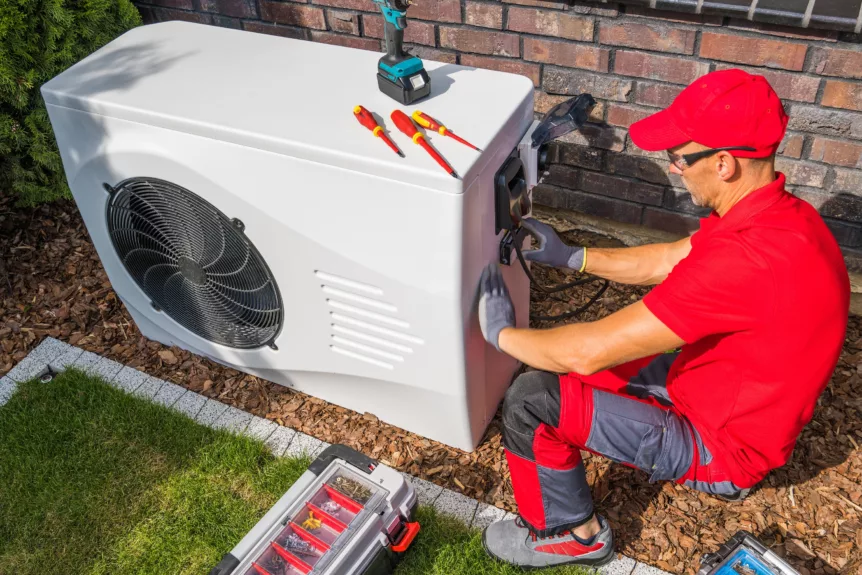A New Generation of Heat Pump Systems Increases Efficiency
By Ravi Malhotra
Tax Credit Advisor, July 2023
More and more states have regulations and mandates requiring multifamily affordable housing properties to decarbonize (i.e., replace the use of natural gas, oil, or propane with electricity). This can be accomplished by upgrading systems for space and water heating. Electric heat pumps are a high-value tool for multifamily housing to respond to new mandates while improving their properties and benefiting their tenants.
Heat pump technology has been around for decades; however, recent technological innovations have dramatically improved performance, efficiency, and costs. Heat pump HVAC (HP-HVAC) systems can provide both heating and cooling, and the new generation of systems heats homes when outdoor temperatures are well below 0°F. They can do so at approximately three times the efficiency of their conventional or “business as usual” (BAU) alternatives, and at almost the same price. Heat pump water heaters (HPWH) are also more efficient but have not reached price parity. The good news is that the Inflation Reduction Act (IRA) and Bipartisan Infrastructure Law (BIL) offer billions of dollars to help multifamily housing make the switch.
IRA provides the Department of Energy (DOE) ~$9 billion for the Home Energy Rebate programs, through which multifamily will be able to receive up to $14 thousand per apartment to install HP-HVAC, HPWH and induction stoves, and to upgrade their electrical infrastructure. Multifamily affordable housing can receive up to $8 thousand per apartment for other efficiency solutions. Funds will flow through State Energy Offices. BIL provides DOE $3.2 billion for the Weatherization Assistance Program (WAP) to be spent over the next five years (on top of the standard ~$1.6 billion) and these funds support electrification upgrades. They are already in play. Multifamily owners and developers need to push their states for a fair investment of DOE funds in the sector, otherwise, these dollars will likely go to single-family homes.
IRA provided the Department of Housing and Urban Development with $1 billion for their Green and Resilient Retrofit Program, which will fund electrification and other improvements in multifamily housing. These funds are already accessible via recently released requests for proposals. The Environmental Protection Agency’s allocation from IRA includes approximately $35 billion that is relevant to multifamily and can enable this sector to electrify through various EPA programs. Some of the Department of Agriculture’s applicable ~$12.7 billion allocation could also help with electrification, although that will depend on the rural utilities who get access to those funds and how they use them (additionally, there is not much multifamily stock in rural areas). Finally, IRA boosted the 45L Tax Credit for new construction and the 179D tax deduction for rehab projects. Bear in mind that the enhanced credit is only available if construction uses prevailing wages. For a quick estimate of the available IRA and BIL benefits, use ICAST’s IRA & BIL Instant Benefit Estimate Calculator.
Besides the benefits of decarbonizing the property, HP-HVAC and HPWH can reduce operational costs while creating healthier, safer, more comfortable and more affordable homes for low-income tenants. For new construction, heat pumps are now more affordable than the BAU options (i.e., gas-fired furnaces and central air conditioning units for space conditioning, and gas-fired hot water systems). In the retrofit market, cost parity has not yet been reached, mainly because of the need to pay for upgraded electrical infrastructure (e.g., panels, wiring) to support the higher electric loads. But in many jurisdictions, utility rebates help offset costs for the switch to heat pumps even without the help of IRA and BIL funds.
For additional information and resources, visit the White House Resources for Consumers – Clean Energy Programs and Incentives at https://www.whitehouse.gov/cleanenergy/.

